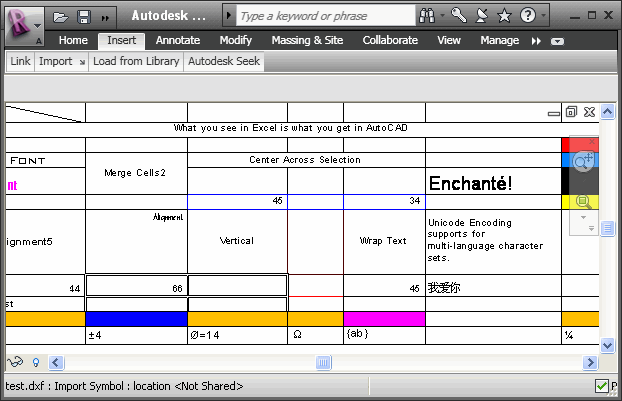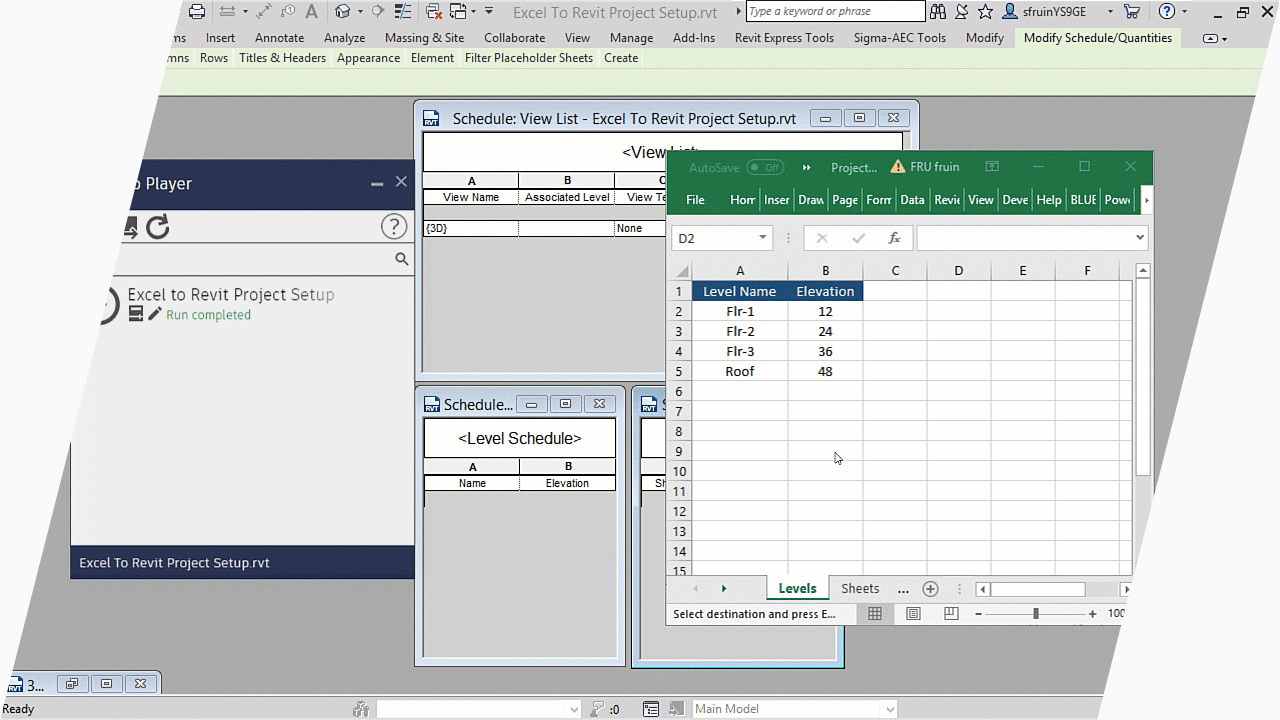Unlock New Possibilities with Cutting-edge Revit Plugins
Wiki Article
Damaging Barriers: Excel Importation Techniques for Advanced Revit Users
Are you an innovative Revit customer wanting to take your abilities to the next level? In this post, we will certainly reveal you how to damage barriers by leveraging Excel for importation in Revit. Discover various data importation methods and master Excel integration to enhance your Revit modeling capabilities. With our tricks and tips, you can get rid of importation challenges and come to be a real specialist in utilizing Excel for your Revit tasks. Obtain prepared to succeed in your Revit trip!Advanced Revit Users: Leveraging Excel for Importation
You can conveniently utilize Excel for importation as an advanced Revit individual. Excel is a powerful device that can considerably improve your process and effectiveness in Revit. With its capability to take care of huge amounts of information and perform complicated computations, Excel can be an important possession in handling and organizing your project info.One means to leverage Excel for importation is by utilizing the "Link Excel" function in Revit. This attribute permits you to link an Excel spreadsheet directly right into your Revit task, allowing you to upgrade and integrate information between the two programs. When dealing with schedules or tracking modifications in your job., this can be especially valuable.
An additional means to utilize Excel is by utilizing the "Import/Export" attribute in Revit. This attribute permits you to import and export information in between Revit and Excel, offering you the adaptability to function with data in both programs. You can import data from Excel into Revit to create elements such as doors, areas, or wall surfaces, and you can likewise export data from Revit to Excel for additional analysis or reporting.

Exploring Data Importation Techniques in Revit Utilizing Excel
Checking out exactly how to import information from Excel right into Revit supplies reliable approaches for incorporating details. When you import information from Excel, you can flawlessly move information such as space routines, material lists, and equipment information into your Revit project. This procedure permits you to conserve effort and time by preventing manual data access.To import information from Excel right into Revit, you can use the "Import/Export" feature. This feature allows you to map the Excel information fields to the corresponding Revit criteria, ensuring that the details is appropriately designated within the model. By selecting the ideal import choices, you can manage how the information is imported and just how it engages with your project.
An additional technique for importing information from Excel into Revit is by making use of Dynamo. With Eager beaver, you can produce custom manuscripts that import information from Excel and control it within your Revit project.
Mastering Excel Combination for Advanced Revit Modeling
One essential method is importing information from Excel spread sheets directly into your Revit design. With a couple of simple steps, you can map the Excel columns to the matching Revit specifications and import the information properly.An additional helpful technique is exporting information from Revit to Excel. This allows you to remove details from your version, such as schedules or material quantities, and examine it in Excel making use of solutions, graphes, or various other effective devices. By leveraging the capacities of Excel, you can perform complex estimations, create custom-made records, and gain beneficial understandings right into your task.
Along with information transfer, Excel assimilation can automate recurring jobs in Revit. By developing macros or manuscripts in Excel, you can automate procedures like producing views, producing sheets, or applying typical families i loved this - revit plugins. This not only saves time yet additionally makes certain uniformity across your job
To grasp Excel combination in Revit, it is essential to understand the information framework and exactly how Revit communicates with Excel. By familiarizing on your own with the readily available devices and click to investigate methods, you can unlock the full potential of Excel integration and take your Revit modeling to the following degree.
Overcoming Importation Difficulties: Excel Techniques for Revit Professionals
When conquering importation obstacles, it's essential to be acquainted with efficient Excel techniques that can profit experts in Revit. As an innovative Revit user, you comprehend the importance of effortlessly importing information from Excel into your jobs.
Another beneficial strategy is using the "Transpose" feature in Excel. This permits you to convert information from rows to columns or the other way around. When importing data into Revit, this can be specifically helpful when you have data in an upright layout in Excel, but you require it to be in a straight format in Revit.
Moreover, making use of Excel solutions such as VLOOKUP and INDEX-MATCH can significantly help in mapping information from Excel to Revit. These solutions allow you to look for specific values in Excel and obtain matching information from an additional column. This can save you effort and time when importing big datasets into Revit.
Excel Information Importation Idea for Advanced Revit Users
By familiarizing on your own with effective Excel tips and techniques, you can enhance your data importation procedure as a sophisticated customer of Revit. Excel is an effective tool that can considerably facilitate the importation of information right into Revit, saving you time and boosting view website your productivity. One beneficial pointer is to utilize the "Text to Columns" attribute in Excel to divide data right into various columns based upon a delimiter. This can be specifically handy when you have information in a single column that requires to be divided into several columns in Revit. Furthermore, making use of Excel's "Paste Special" feature enables you to paste information from Excel right into Revit while maintaining format, such as cell shade or font design. This can be particularly beneficial when importing information that calls for specific formatting in Revit. Another valuable method is to make use of Excel's "Locate and Replace" feature to quickly make changes to your data before importing it into Revit. You can quickly replace specific message or characters with others, saving you the time and effort of manually editing the information in Revit. By making use of these Excel pointers and methods, you can simplify your information importation procedure and end up being much more efficient in utilizing Revit.
Conclusion
You have actually now discovered beneficial techniques for importing data from Excel right into Revit as an innovative individual. Go in advance, damage those barriers and stand out in your Revit tasks!
When importing data right into Revit, this can be particularly practical when you have information in a vertical style in Excel, yet you need it to be in a straight format in Revit.
Additionally, utilizing Excel formulas such as VLOOKUP and INDEX-MATCH can significantly aid in mapping information from Excel to Revit. Furthermore, utilizing Excel's "Paste Special" function enables you to paste data from Excel into Revit while keeping formatting, such as cell shade or font design.
Report this wiki page